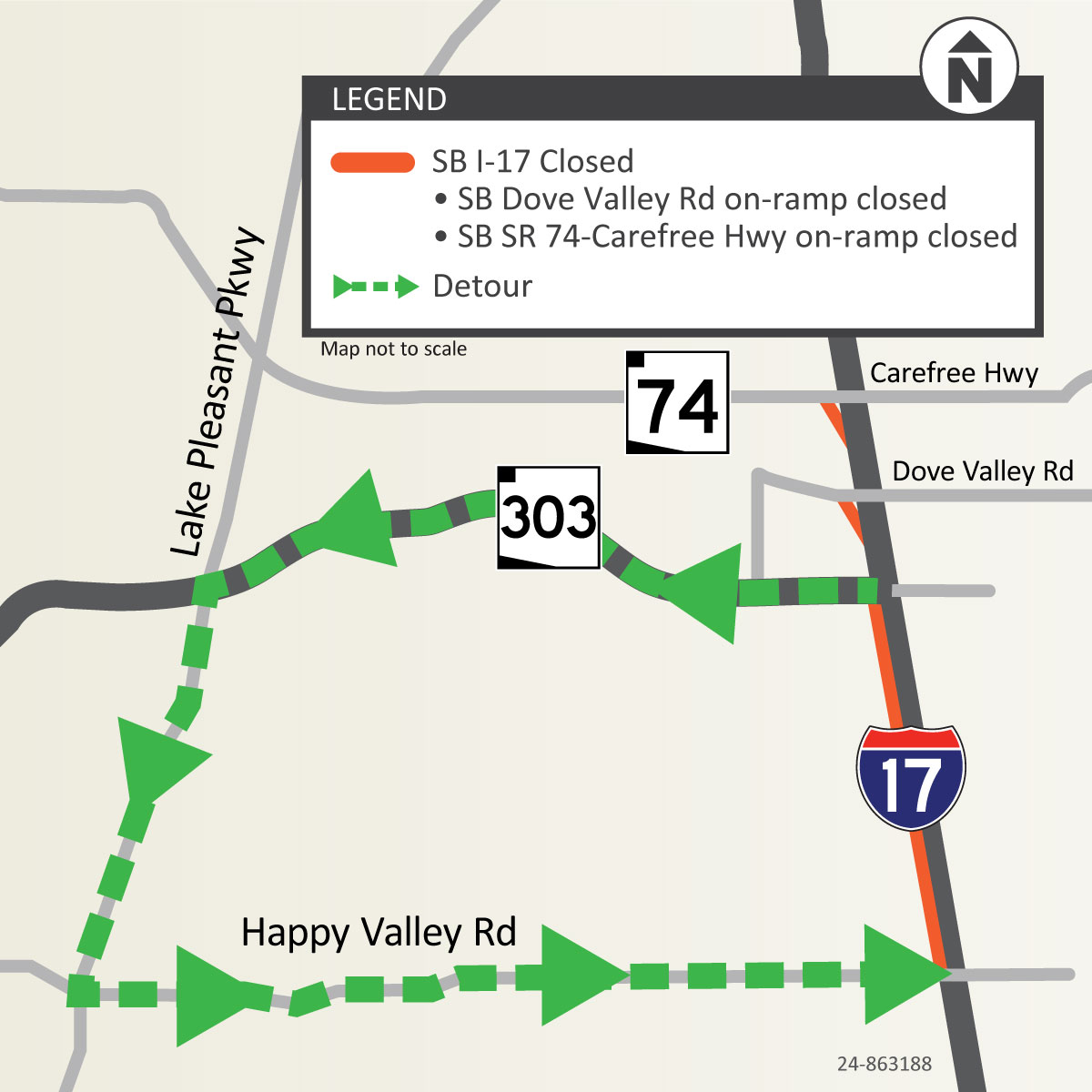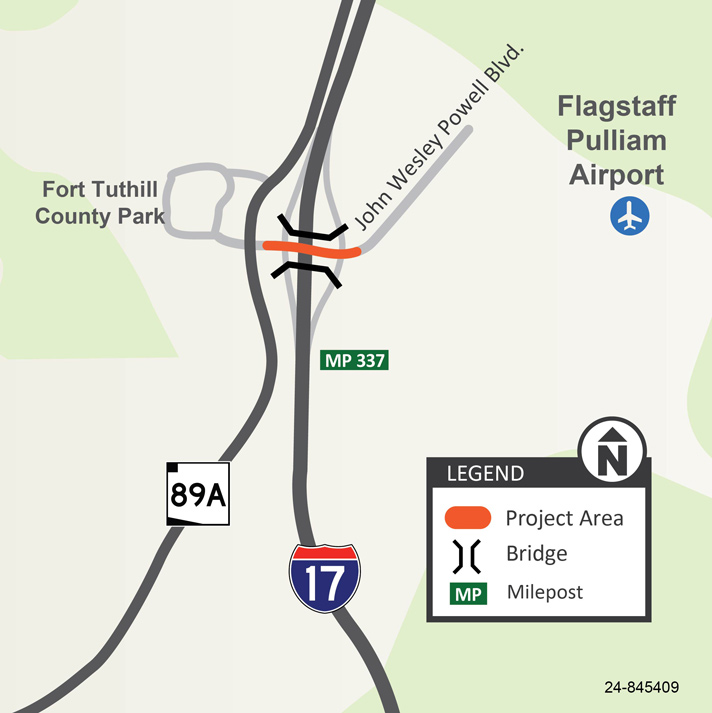Weekend Alert: Southbound I-17 closed in north Phoenix (July 26-29)
Weekend Alert: Southbound I-17 closed in north Phoenix (July 26-29)
Weekend Alert: Southbound I-17 closed in north Phoenix (July 26-29)
Weekend Alert: Southbound I-17 closed in north Phoenix (July 26-29)
Freeway will be closed between Loop 303 and Happy Valley Road
PHOENIX – A stretch of southbound Interstate 17 is scheduled to be closed this weekend (July 26-29) in north Phoenix for ongoing pavement improvement work, according to the Arizona Department of Transportation.
Drivers should allow extra time, consider traveling during non-peak morning or nighttime hours and stay on the designated detour route with southbound I-17 closed between Loop 303 and Happy Valley Road from 10 p.m. Friday to 5 a.m. Monday.
Traffic will detour on westbound Loop 303 to southbound Lake Pleasant Parkway and use eastbound Happy Valley Road to return to I-17.
ADOT offers these additional tips:
- Southbound I-17 drivers should avoid attempting to use local streets east of I-17 as alternate routes. This is a recipe for longer delays and inconvenience for all. The posted detour, which will be monitored by off-duty officers and project staff, is the most efficient way to move through the area near the closure.
- Lengthy traffic backups are unavoidable during freeway closures like this one, so drivers should plan ahead. Those with weekend plans to use southbound I-17 through the north Valley can consider traveling before Friday night’s closure begins. Traffic on southbound I-17 also generally is lighter during the early morning hours or later at night and is expected to be especially busy on Saturday and Sunday afternoons.
- ADOT will be placing local-only closures at neighborhood entrances on a number of streets near I-17 to help direct detour traffic away from local roadways. Law enforcement officers will be stationed at intersections throughout the area to assist with traffic flow.
- ADOT also is taking steps to reduce the chances that navigation apps will direct drivers to other local roads. Staying on the detour route regardless of what a navigation app may suggest is the best way to reduce delays for yourself and others.
Crews are continuing a much-needed project to improve the ride on six miles of I-17 between Happy Valley Road and State Route 74. Additional I-17 closures or lane restrictions will be needed as the work proceeds. ADOT encourages drivers to sign up for project traffic alerts at azdot.gov/i-17HappyValleySR74.
Following the initial removal of an old, worn top layer of asphalt pavement along the freeway, crews have been replacing bridge deck joints and have started smoothing the freeway’s remaining concrete surface through a process called diamond grinding. Diamond grinding has been used in recent years to create a smoother and more durable road surface on a number of Phoenix-area freeways, including I-10, I-17, Loop 101 and Loop 202.
The I-17 pavement work between Happy Valley Road and SR 74 is separate from the I-17 Improvement Project currently underway north of Anthem Way. For more information about that larger project visit improvingi17.com. Drivers are reminded that the speed limit within that project’s work zone is 65 mph.
Real-time highway conditions are available on ADOT’s Arizona Traveler Information site at az511.gov, the az511 app or by calling 511.



